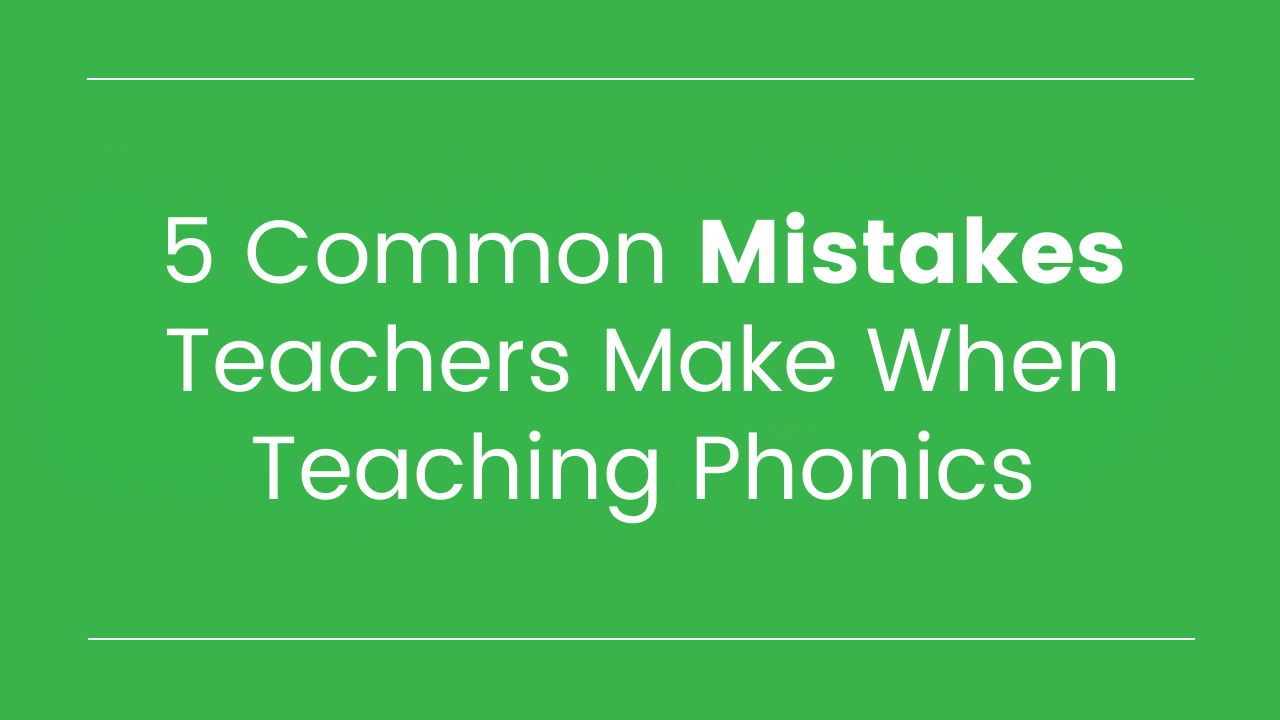
5 Common Mistakes Teachers Make When Teaching Phonics
Teachers want their students to be successful! However, teaching is a complex art and skill, and making mistakes is normal. We all make mistakes! In this blog post, we'll cover 5 common mistakes that teachers make when teaching phonics - and how to fix them.
Mistake #1: Not providing phonics instruction every day.
In grades K-2, students need to receive daily phonics instruction. Many students in 3rd grade and up benefit from daily phonics instruction, too!
If you have to skip a day, it's not the end of the world, of course. But what you don't want to do is create a schedule where you're only teaching phonics in small groups and students only meet with you a few times each week.
Mistake #2: Focusing too heavily on general word knowledge or specific word knowledge.
General word knowledge, as it relates to phonics learning, is knowledge of phonics patterns. We build students' general word knowledge when we teach them the sound of short e, or the "oa" vowel team. Because many words in English follow patterns, we want students to learn common patterns so that they can read and spell many, many words. This prevents us from having to teach students every single word in the English language individually!
That said, specific word knowledge is also important. Students need to know, for example, whether to use the word "meet" or "meat." They need to know how to read the word "could," even though the spelling and sounds are different from what they might expect.
It's easy to focus too heavily on general word knowledge OR specific word knowledge. However, both are very important to students' success in phonics and reading. To make sure you have balance, teach students about patterns and show them words with the pattern. But also make sure to work on irregularly spelled words and skills like homophones to build students' specific word knowledge.
Mistake #3: Keeping phonics routines exactly the same throughout the year.
Routines are great for consistency and for maximizing instructional time! However, your routines need to shift somewhat throughout the school year. Here are some examples of shifts you'll want to make:
- In Kindergarten and 1st grade, allot more time for reading or reading longer texts as the year goes on
- In 2nd grade, spend less time on isolated phonemic awareness activities as students demonstrate proficiency with these skills
You can read more about this topic in this blog post.
Mistake #4: Moving on from a skill too quickly.
When we're teaching phonics skills, we want students to gain a high level of mastery with a skill before we start introducing the next skill. Otherwise, students end up with gaps in their knowledge, which leads to break-downs in their decoding and spelling abilities.
This mistake is often caused by programs covering a skill a week and then moving on! In From Sounds to Spelling, we encourage teachers to make a decision about moving onto the next skill based upon their observations and student data. Most weeks include a dictation (similar to a spelling test) at the end of the week, so teachers can look for 80% proficiency before deciding to move on to the next week's skills.
It's also important to note that even though students may appear to have mastered a particular skill, it's important to continue reviewing that skill in the future. It's easy for students to "forget" skills or confuse them with new skills that they learn later. And this brings us to...
Mistake #5: Not incorporating intentional review.
Reviewing words and patterns is absolutely necessary, even when you've provided outstanding instruction and students appear to have mastered a skill. However, many phonics programs don't incorporate enough intentional review.
Here are a few ways to make review a part of your routine:
- Start each phonics lesson by reviewing sounds and high frequency words that you've already taught
- Choose words for students to decode (read) and encode (spell) that contain previously-taught patterns (for example, if you're working on vowel teams, choose some words that have digraphs and blends, too, like "cheat" or "float")
- Set aside a few minutes for review games each week or every other week
In Conclusion
Remember, if you've made these mistakes before, no need to feel shame or guilt. We are all learning and growing - and the education profession as a whole is, too!
If you're looking for a phonics program to guide you in implementing effective phonics instruction - that avoids these mistakes - check out From Sounds to Spelling. Programs for Kindergarten, 1st grade, and 2nd grade are available, and they cover phonological awareness, phonics, high frequency words, and more.




